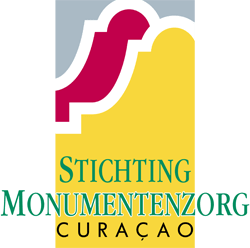If you ask anyone in Curaçao to describe a monumental building, they will most likely talk about its decorative façades, colorful expression, or possibly even its poor state of maintenance. If your conversation partner knows a little bit more, they may talk about the unique building method of using coral stones and brackish sea water morter and the challenges this poses to the upkeep of these buildings. Maybe, some will elaborate on its historical and cultural significance, but very, very rarely will the words ‘steel & glass construction’ or ‘innovative design’ come up.
This is not surprising, as the art of preserving and reviving historical structures, is all about staying true to the original fabric of the building and adhering to its historical accuracy. But this is only part of the story.
Restoration architecture, the art of preserving and reviving historical structures, has long been a practice of preserving cultural heritage. Traditionally, the focus has been on faithfully adhering to historical accuracy and maintaining the integrity of the original design. However, in recent times, a growing trend towards incorporating modern elements into restoration architecture has emerged. This essay will explore why there is nothing inherently wrong with introducing modern elements and why it can be seen as desirable for several reasons.
Fostering a Dynamic and Sustainable Approach
Incorporating modern elements in restoration architecture allows for a dynamic approach that adapts historic structures to contemporary needs and challenges. Modern technologies and materials can enhance historical buildings’ structural integrity and functionality while promoting sustainability. By introducing energy-efficient systems, such as solar panels or smart climate control, these structures can become more environmentally friendly and economically viable for long-term use. Sometimes existing structures can be adapted. Think about a traditional gutter system with an aqueduct and rainwater cistern that is lined with modern waterproofing material to prevent the loss of captured rainwater.
Celebrating Historical Continuity and Evolution
Architecture is a reflection of societal values, aesthetics, and technological advancements. Embracing modern elements in restoration acknowledges the evolution of architectural styles over time. Each era has left its mark on the built environment, and incorporating contemporary designs honors the continuum of human creativity. By preserving the historical essence while blending it with modern elements, restoration architects pay homage to the past while embracing the future. An educated eye will be able to tell which part of a building originates from which era, based on the architectural features that were common in that particular time period. A great example of this is the Public Registry Office (Kranshi), where the traditional 19th-century mansion was complimented with a two-story atrium over its patio, built with glass and steel in a style typical of the late ’90s, and early ’00s.
Enhancing Accessibility and Usability
Historical structures often present accessibility challenges, such as narrow doorways or limited facilities for individuals with disabilities. Introducing modern elements can make these buildings more inclusive and usable for everyone. For example, the integration of ramps, elevators, and accessible bathrooms ensures that heritage sites are welcoming and functional for a diverse range of visitors. While the indoor structure is sometimes hard to adapt, ‘De Tempel’ is a great example of how adding this to the outside of the building can actually elevate and complement the original design.
Encouraging Artistic Expression and Creativity
Combining old and new architectural styles opens up new avenues for artistic expression and creativity. Designers can experiment with innovative concepts while respecting the historical context. The juxtaposition of traditional and contemporary elements can create captivating spaces that inspire both visitors and future architects. This blend of styles can become an architectural representation of cultural integration and harmony.
Preserving Lost Techniques and Skills
Traditional craftsmanship and construction techniques sometimes fade away over time, especially in the face of rapid technological advancement. When modern elements are introduced in restoration, there is an opportunity to revive and preserve these lost skills. By combining contemporary practices with traditional craftsmanship, restoration architects can create a seamless blend of old and new, ensuring the preservation of invaluable knowledge for future generations.
Conclusion
In conclusion, the incorporation of modern elements in restoration architecture offers a plethora of benefits that make it a desirable approach. From fostering a dynamic and sustainable outlook to celebrating the continuum of architectural evolution, this blending of styles enhances accessibility, encourages creativity, and revitalizes urban spaces. Moreover, preserving lost techniques and skills ensures the continuation of cultural heritage through time.
While maintaining respect for historical authenticity is crucial, embracing modern elements in restoration architecture can lead to a harmonious coexistence of the past and the present. As societies progress, the preservation of cultural heritage should not be confined to a static vision of the past. Instead, it should embrace the dynamism of the present and future, allowing historical buildings to remain relevant and meaningful in the ever-evolving urban landscape.




